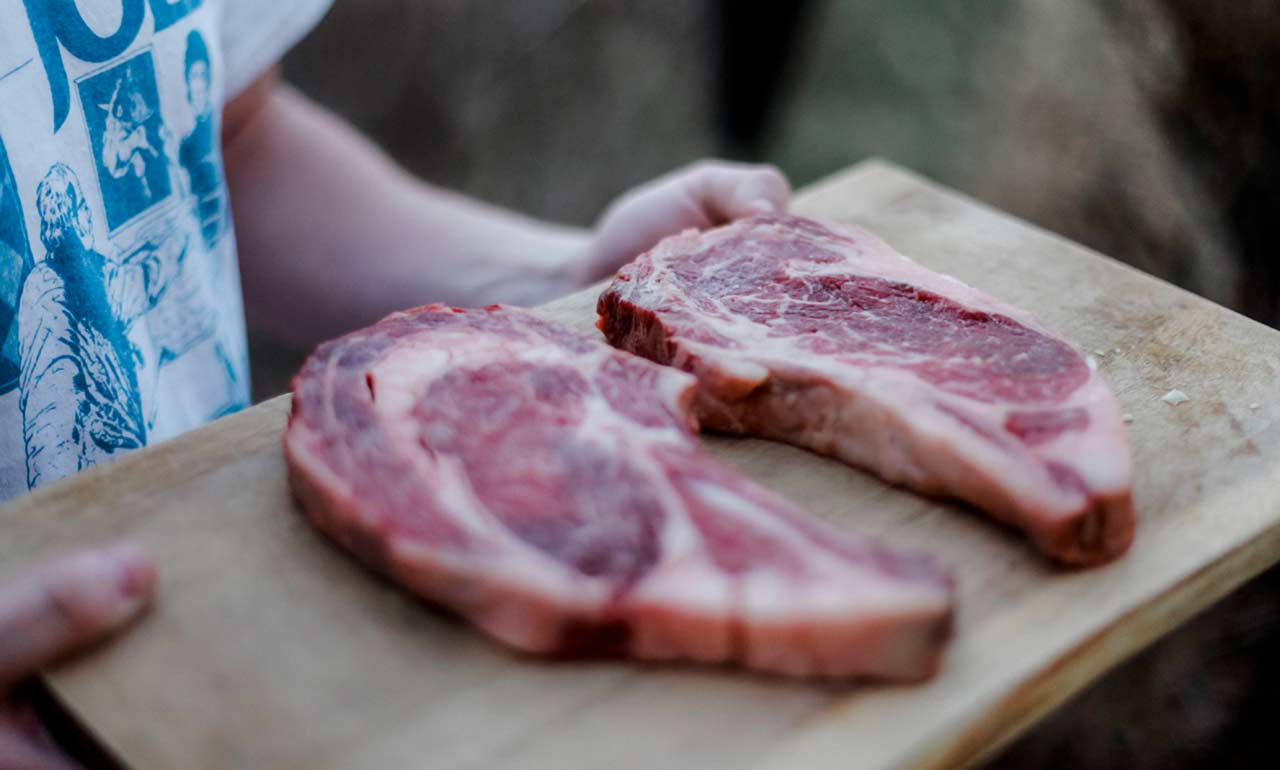Top Reasons to Patronize Bagley Farms Meat Market Edwardsville IL for Premium Meats
Top Reasons to Patronize Bagley Farms Meat Market Edwardsville IL for Premium Meats
Blog Article
Uncover the Art of the Butcher's Cut in a Modern Meat Market
In the ever-evolving landscape of modern-day meat markets, the butcher's cut has transcended its conventional roots, combining age-old workmanship with modern techniques. Today's butchers are not just cpus of meat; they are well-informed artisans who emphasize sustainability and moral sourcing. Their knowledge in choose and preparing cuts customized to specific culinary requirements provides an unmatched eating experience. Yet, what absolutely establishes the modern butcher apart is their capacity to build a much deeper link between customers and the beginnings of their meat. How do these masters balance practice with innovation, and what implications does this have for the future of meat usage?
Evolution of Butchery Techniques
The development of butchery strategies reflects an abundant tapestry of development and adaptation driven by advancements in innovation, adjustments in consumer demand, and a much deeper understanding of meat scientific research. Historically, butchery was a craft gave via generations, with approaches sharpened over centuries to make best use of yield and flavor. The industrial revolution ushered in mechanization, changing traditional practices and making it possible for massive processing.
The mid-20th century saw butchery strategies additionally improved by scientific insights into muscular tissue biology and meat aging, boosting both tenderness and taste. Innovations like vacuum cleaner packaging and refrigeration extended product shelf-life, enabling butchers to diversify offerings and improve quality control. This duration also noted the surge of specialized equipment, such as band saws and meat slicers, which enhanced precision and performance in meat processing.

Digital systems currently aid in tracking pet provenance and optimizing cuts to satisfy details customer choices. Furthermore, a rebirth in artisanal butchery has emerged, blending traditional abilities with contemporary understanding to provide to consumers looking for ethical and lasting meat choices.
Comprehending Meat Cuts
Understanding the complexities of meat cuts is necessary for both butchers and customers looking for top quality and worth. For butchers, precise cuts mirror ability and regard for the craft, guaranteeing very little waste and ideal yield.

Understanding muscle make-up is crucial; muscular tissues utilized much more often by the animal have a tendency to be harder and are best matched for slow cooking techniques, while less-used muscles, like those located in the loin, are much more tender and suitable for cooking or roasting. Experience with these differences encourages customers to make enlightened choices, improving their culinary endeavors.
Picking Quality Meat
Choosing the right meat entails more than simply selecting a visually enticing item additional info from the display screen. bagley farms meat market edwardsville il. The art of picking quality meat calls for a discerning eye and knowledge of certain qualities that represent freshness and quality. Firstly, focus on the color; beef should have a brilliant, cherry-red color, while lamb ought to show a soft pink tone, and pork a pale pink. This shows the meat is fresh and hasn't been revealed to oxygen for too long.
Secondly, consider the marbling, which describes the white streaks of fat within the muscle mass. Appropriate marbling is a crucial sign of tenderness and flavor, as it melts during cooking, enhancing the meat's juiciness. Bear in mind, higher marbling usually correlates with superior quality cuts, such as USDA Prime.
Structure is one more vital element; meat needs to really feel firm to the touch, not slimy or overly soft. Furthermore, be conscious of the scent. Fresh meat should have a clean, neutral odor, cost-free from any type of sour or off-putting odors.
Coupling Cuts With Food Preparation Techniques

On the other hand, harder cuts like brisket and chuck roast are abundant in collagen, which damages down right into jelly when prepared gradually. These cuts are suitable for braising or sluggish roasting, enabling the meat to tenderize gradually and develop deep, intricate tastes. Cuts such as brief ribs and pork shoulder fare well with slow-cooking techniques, where expanded cooking times change their robust textures right into useful site succulent recipes.
Lamb shanks and oxtail, which need prolonged cooking to tenderize, are best prospects for stewing or sluggish simmering. These techniques coax out abundant, passionate flavors while maintaining dampness. By comprehending the unique attributes of each cut, chefs and home cooks alike can boost their culinary productions, making sure each recipe is both satisfying and unforgettable.
The Butcher's Duty Today
Navigating the developing landscape of the contemporary meat market, the butcher's role today extends past simple preparation of cuts. Contemporary butchers are cooking craftsmens, educators, and supporters for sustainable methods.
In addition to crafting read this precise cuts, butchers currently involve directly with consumers, using cooking guidance and customizing selections to fit private demands and preferences. Their proficiency in meat aging, marbling, and flavor profiles encourages customers to make enlightened decisions, enhancing their cooking experiences. This personalized service exhibits the butcher's developing function as a trusted consultant in the kitchen area.
In addition, butchers are crucial in decreasing waste, utilizing whole pets to produce varied products such as sausages and supplies. This extensive strategy not just appreciates the pet but likewise straightens with modern sustainability goals. This way, the modern-day butcher embodies both tradition and innovation, adapting to an ever-changing market while protecting the creativity and stability of their craft.
Verdict
Proficiency in understanding diverse meat cuts and top quality indications equips butchers to offer informed recommendations, straightening certain cuts with optimum food preparation techniques. By recognizing historical techniques while accepting contemporary demands, the butcher's duty stays important in today's sophisticated meat market.
Report this page